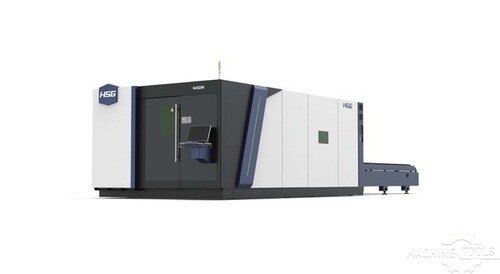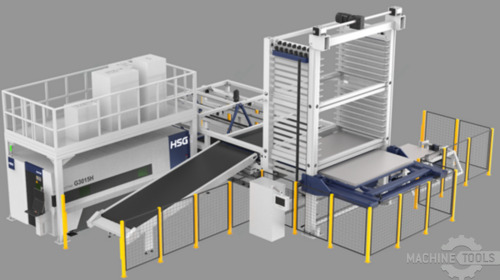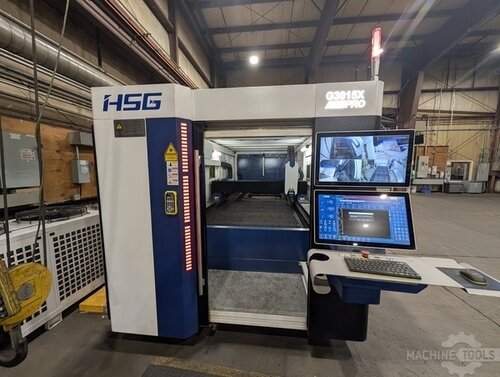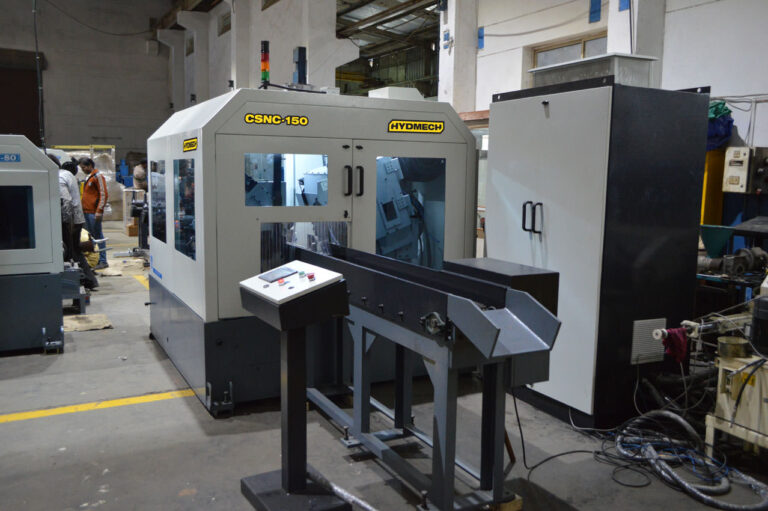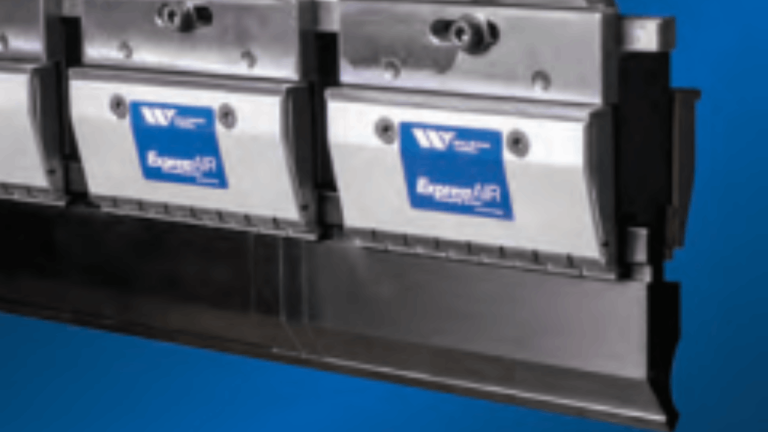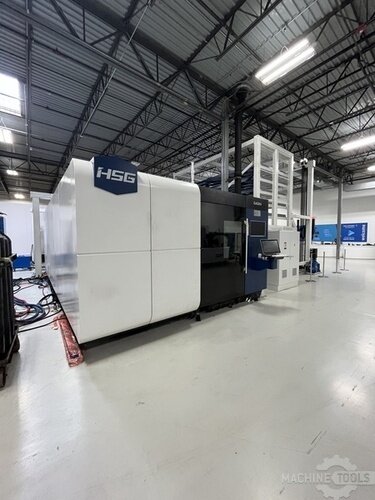As the VP of Sales at Mac-Tech, I’ve had the privilege of guiding many businesses through significant transitions in their fabrication processes. My passion for helping customers achieve laser success has grown steadily, thanks to my experience in automation and precision fabrication. I believe that pairing robust IPG Solutions with a consultative approach creates valuable, long-lasting partnerships.
Over the years, I’ve seen firsthand how the right laser technology, combined with personalized support, can revolutionize a customer’s operations. My focus is always on understanding each organization’s unique needs and providing tangible results that optimize efficiency and profitability. When I introduce tailored IPG laser solutions, I’m not just selling equipment—I’m delivering a pathway to smoother workflows and improved business outcomes.
Every consultation and project is a chance to learn something new and share my expertise. I always look forward to collaborating with clients on solutions that meet their challenging production goals. My goal is to bring clarity and relief to their fabrication challenges, one project at a time.
How I Tailor IPG Solutions for Each Client’s Success
When I first engage with potential clients, I aim to understand their motivations and current pain points. Some are seeking ways to reduce lead times, while others want to expand their cutting capabilities. By outlining a clear vision from the start, I can match them with the right IPG laser technology, whether they’re focused on high-speed cutting or specialized precision applications.
I’ve witnessed how customization can make or break a solution’s long-term success. For instance, if a client has strict tolerances in stainless steel parts, I’ll address those specifications by focusing on IPG lasers capable of delivering consistent edge quality. By paying close attention to the finer details—from part material thickness to production volume—I ensure that the laser solution fits perfectly within the client’s operational landscape.
Beyond the technical specs, I recognize that every organization’s culture and workflow vary. My role is not just about selling machinery; it’s about integrating technology in a way that aligns seamlessly with existing processes. It’s my belief that when the solution naturally fits into how a team works, the entire company reaps the rewards of increased productivity and better end products.
My Consultative Method: Understanding Client Needs
Before recommending any specific laser equipment, I prioritize in-depth discussions and site visits. My goal is to get a holistic picture of each client’s workflow, identifying bottlenecks and opportunities for process improvements. This hands-on approach helps me see beyond the specifications and into the real-world application of IPG solutions.
By collaborating with engineers, operators, and decision-makers, I gather multiple perspectives on how a new laser system will be utilized. Each conversation unveils new insights, allowing me to refine my recommendations. If a client sees automation as crucial to scaling production, I’ll emphasize hardware and software features that accommodate future automated expansions.
This consultative process ensures that clients feel confident about their investment. I make it a point to explain the various possibilities, detailing how IPG technology can grow with their needs. My role is that of a trusted advisor—someone who combines industry knowledge, personal experience, and a keen listening ear to pave a smooth path to laser success.
Crafting Long-Term Partnerships with IPG Laser Tech
From my perspective, providing a top-tier laser solution is only the first step. I strongly believe in forming partnerships built on transparent communication, shared goals, and consistent follow-through. Whether a client is experimenting with a single laser cutting station or revamping an entire production line, I see every project as an ongoing collaboration.
There’s a certain peace of mind that comes from knowing a partner is there to support you long after the initial install. My team and I offer regular check-ins, updates on new technologies, and proactive maintenance schedules to keep IPG systems running at maximum efficiency. The long-term viability of any fabrication solution relies on the quality of ongoing technical support and user training.
By strengthening these relationships over time, I can ensure that each investment in IPG laser equipment continues to pay off. As clients’ capabilities grow, I remain available to guide expansions, upgrades, and strategic modifications. I view these sustained partnerships as the heart of what we do at Mac-Tech—helping clients outpace their competition and realize new levels of success.
HSG 3015H 12KW
HSG-G3015H V2.0-STORE PRO3015 10 SHELF
Ensuring Sustainable Outcomes Through My Ongoing Support
One of the biggest advantages of working with IPG Solutions is their reliability and compatibility with automation enhancements. Yet, to truly maximize the technology’s potential, a dedicated support system is essential. That’s why I’m always keen to stay involved, ensuring that every laser implementation is running efficiently and delivering measurable ROI.
This continuous involvement extends beyond equipment updates. I make recommendations on additional automation modules, software integrations, and even new manufacturing processes that can reduce downtime or improve material usage. My expertise in precision fabrication allows me to spot inefficiencies and address them before they escalate into bigger issues.
Ultimately, my focus is on sustainable growth for each client’s operation. By providing a robust after-sales structure—whether it’s troubleshooting, advanced operator training, or guidance on expansions—I aim to guarantee that every IPG laser system remains an asset well into the future. For me, seeing a customer thrive with our solutions is the most rewarding aspect of my work.
FAQ
What makes IPG Solutions stand out from other laser technologies?
IPG Solutions are renowned for their high-quality laser sources, efficient power usage, and consistent cutting performance. These features enable clients to improve throughput while maintaining precise tolerances.
How do you determine which IPG laser system is right for my business?
I conduct a thorough needs assessment, factoring in your material types, production goals, and budget. From there, I recommend the IPG system that best aligns with your workflow.
Can IPG lasers integrate with existing automation systems?
Absolutely. IPG equipment is designed with compatibility in mind, making it easier to incorporate into your current automation setups or to expand with future automation upgrades.
What kind of ongoing support and training do you offer?
My team and I provide comprehensive training programs, regular maintenance checks, and troubleshooting guidance. We’re committed to ensuring your system operates smoothly long after installation.
How can I measure the return on investment after switching to IPG lasers?
We work with you to define key metrics—such as production speed, material efficiency, and labor savings—so you can track how these improvements impact your bottom line over time.
I’m always ready to discuss how IPG Solutions can strengthen your fabrication processes—whether that’s through cutting-edge automation, improved workflow, or simply superior laser quality. If you have questions or want to explore the possibilities further, I’d be delighted to dive deeper into your specific needs and objectives.
Get Weekly Mac-Tech News & Updates

